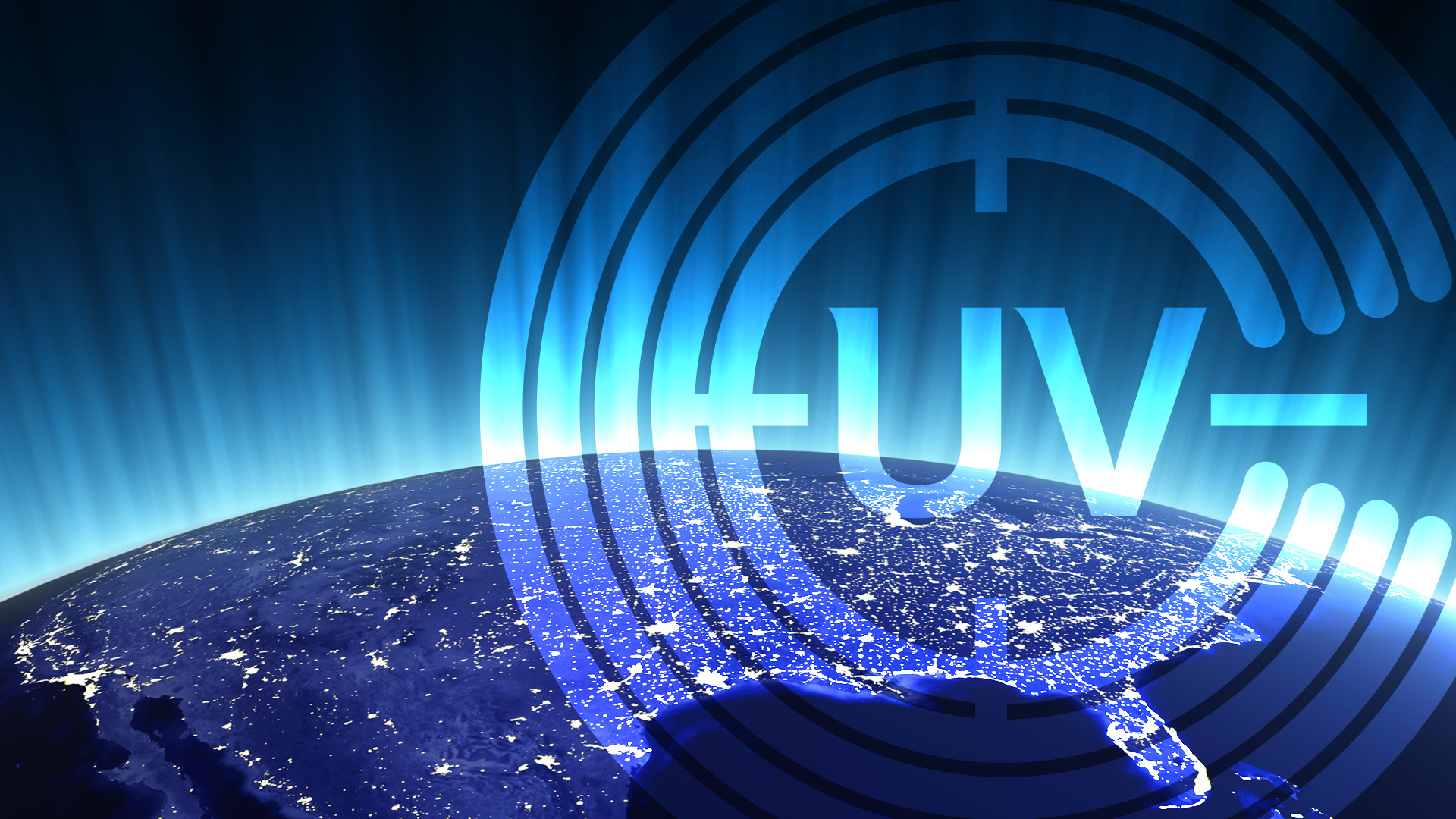The multiyear pandemic has caused no shortage of societal shifts in American culture. From masks to social distancing to more frequent spritzes of hand sanitizer, the demand for effective methods of disinfection and sterilization has never been greater. However, what if we could achieve a safe environment without the lockdowns and social distancing? Far-ultraviolet (Far-UV) light has emerged as a promising technology, offering a hands-off unique approach to killing harmful microorganisms. Let’s dive into the science behind Far-UV light and explore how it works and its potential to create a safe, virus-free environment.
The spectrum of Ultraviolet (UV) light
Ultraviolet (UV) light is part of the electromagnetic spectrum, sitting between visible light and X-rays. UV light is categorized into different regions based on wavelength, and these regions have distinct properties and applications. The UV spectrum is divided into three main categories: UVA, UVB, and UVC.
UVA (320-400 nm)
UVA (Ultraviolet A) rays are closest to visible light and are commonly associated with tanning beds and sun exposure. While UVA rays have less energy than shorter-wavelength UV rays, they can still contribute to skin aging and DNA damage.
UVB (280-320 nm)
UVB (Ultraviolet B) rays are responsible for causing sunburn and are more energetic than UVA rays. Prolonged exposure to UVB can increase the risk of skin cancer.
UVC (100-280 nm)
UVC (Ultraviolet C) rays are the shortest in wavelength and the most energetic in the UV spectrum. They are the focus of our discussion on Far-UV technology.
The lethal power of UVC light
UVC (also known as Far-UV) light is highly effective at neutralizing microorganisms, including bacteria, viruses, and fungi. UVC light goes through a process known as germicidal irradiation. The key to its germ-killing prowess lies in its ability to damage the genetic material (DNA or RNA) of microorganisms, rendering them unable to reproduce or cause infections.
The mechanism of UVC-induced microbial inactivation can be summarized in a few key steps:
Absorption
When UVC photons with the right energy strike the genetic material of a microorganism, they are absorbed by the DNA or RNA molecules.
Formation of photoproducts
This absorption causes changes in the structure of the genetic material, creating what are known as photoproducts or photodimers. These are essentially molecular lesions that disrupt the microorganism’s ability to replicate.
Inhibition of replication
The presence of photoproducts prevents the microorganism from replicating correctly during cell division or transcription, leading to cell death.
Cell inactivation
Over time, as the microorganism’s DNA accumulates damage, it becomes increasingly dysfunctional and ultimately dies.
UVC light is most effective at wavelengths between 200 and 280 nanometers. It is this segment of the UV spectrum that Far-UV light harnesses to combat harmful pathogens.
Far-UV: the specifics of short wavelengths
Far-UV light, also known as Far-UVC, typically refers to UVC light at the shorter end of the spectrum, specifically between 207 and 222 nanometers. What sets Far-UV apart from traditional UVC is its shorter wavelength, which has a unique advantage: research proves it can inactivate microorganisms without harming human cells or tissues.
Far-UV light can damage microorganisms but not human cells because of their structural differences; human cells are more complex and less penetrable than those of microorganisms. Far-UV light does not have the energy to break through the protective outer layers of human skin or eyes, making it safe for use in occupied spaces.
In contrast, microorganisms like bacteria and viruses have much smaller and less complex structures, enabling Far-UV light to penetrate and damage their genetic material. Far-UV technology’s capacity to demolish microorganisms while sparing human cells makes it an exciting, safe prospect for various applications.
Applications of Far-UV technology

Air disinfection
One of the most promising applications of Far-UV technology is in air disinfection. This can help reduce the transmission of airborne diseases in places like hospitals, offices, and public transportation.

Surface disinfection
Far-UV-C lamps can also be used to disinfect surfaces. In healthcare settings, for instance, they can be employed to sanitize hospital rooms and equipment quickly. They can help with automating the process and reducing the risk of human exposure to harmful pathogens.

Personal devices
The miniaturization of Far-UV technology has paved the way for personal devices. Portable Far-UV devices, such as wands and phone sanitizers, are now available on the market. These devices allow individuals to disinfect personal items like smartphones, keys, and wallets on the go.
The future of Far-UV technology
Far-UV technology has the potential to revolutionize how we approach disinfection and sterilization, offering a safe and effective way to combat the spread of infectious diseases. As research continues and applications expand, we can expect to see even more innovative uses of Far-UV light in various industries.
The pandemic accelerated interest in Far-UV technology, driving research and development efforts to make it more accessible and practical for everyday use. With advancements in materials science and engineering, we can anticipate the development of more efficient and cost-effective Far-UV solutions.
Here at Precision UV-Clean, our commitment to innovation and communal well-being positions us at the forefront of harnessing the power of Far-UV light. Our mission is to make your spaces safer and healthier with the cutting-edge technology of Far-UV. Reach out to us here at Precision UV-Clean to learn more about what Far-UV technology can do for you!
